Confused about which side of your foam carpet pad should face up?
You’re certainly not alone, and the answer can make a huge difference in your carpet’s performance and longevity.
In this article, we clear up the confusion with definitive guidance, helping you lay the carpet pad the right way for optimal results.
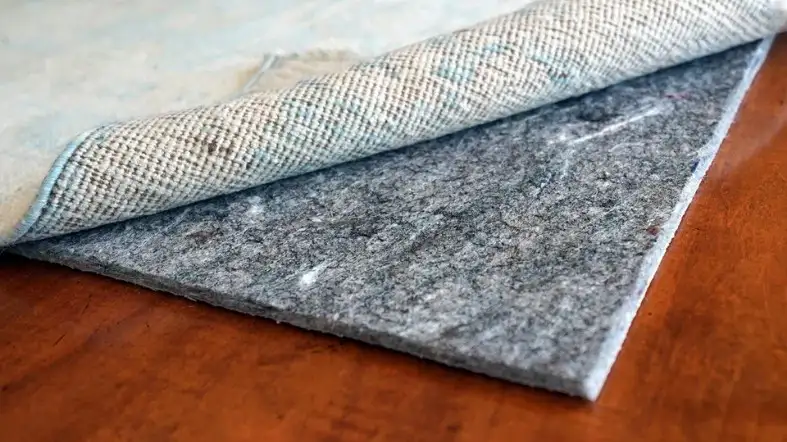
Which Side Of Foam Carpet Pad Goes Up?
The side of carpet padding with the moisture barrier or the side that is more shiny or slick should face up, towards the carpet. The other side, which is usually rougher, should be in contact with the subfloor. This ensures optimal performance and durability of your carpet.
Tips For Setting Foam Carpet Pads With Your Carpet
1. The Smooth Side Ascends
Start by placing the carpet pad with the smooth side facing upward. The reason for this is that the carpet’s smooth side provides padding.
You do not want the rougher side to face the carpet, since this will reduce the effectiveness and general utility of the pad.
The rough side is intended to be placed against the floor to provide traction. This ensures that the carpet does not move and is always stable.
While the smoother side of the foam carpet pad will protect the underneath of the carpet, the rougher side will not.
This is essential for boosting the carpet’s durability as it ages. When the incorrect side of the pad is placed on the carpet, the material can begin to rip at the base.
This is risky and will diminish the value of your carpet. Before beginning, take the time to observe which side is smooth and which is not. This is required.
2. Keep It Centered
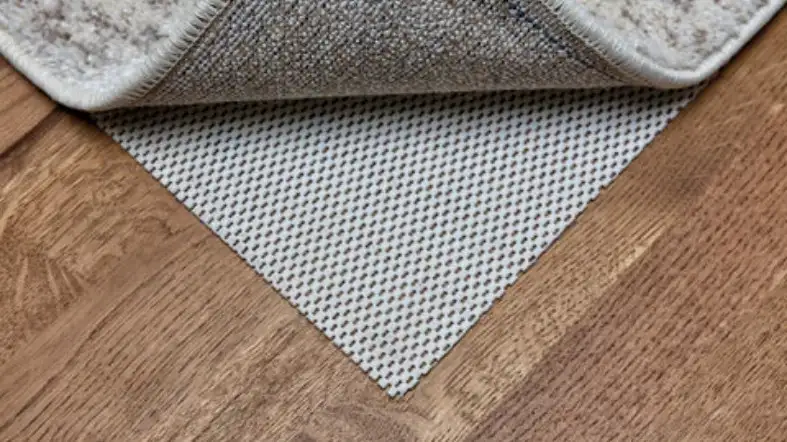
You should center the foam carpet pad to the greatest extent possible. The objective is to position the carpet pad in a manner that is ideal for the carpet.
When the carpet pad is off-center, it will be evident as you walk on the surface. This is about comfort and durability, which is why you should examine it closely.
If the foam carpet pad is smaller than the carpet, it must always be centered to ensure even distribution.
It is prudent to measure the foam carpet pad in advance.
This will not only indicate which side should be facing up but also how the carpet pad should be installed.
In order to avoid having to remove the carpet a second time in the future, it is crucial to accomplish this correctly the first time.
3. Remove Bubbles Or Wrinkles
Wrinkling is a typical hazard with carpets. You do not want the carpet pad to contribute to the formation of these creases.
If the carpet pad is not installed smoothly, it will be evident when walking on the carpet.
When the foam carpet pad is improperly installed, carpets are damaged. This is typically owing to the presence of bumps or creases underneath.
It is a common misconception that these wrinkles will smooth out on their own.
They are not going to straighten out, and may even become more clumped! It is necessary, to ensure that everything is in order and functions as planned.
In the absence of a carpet pad, the comfort of the carpet will be diminished.
Things To Consider While Selecting The Appropriate Foam Carpet Pad
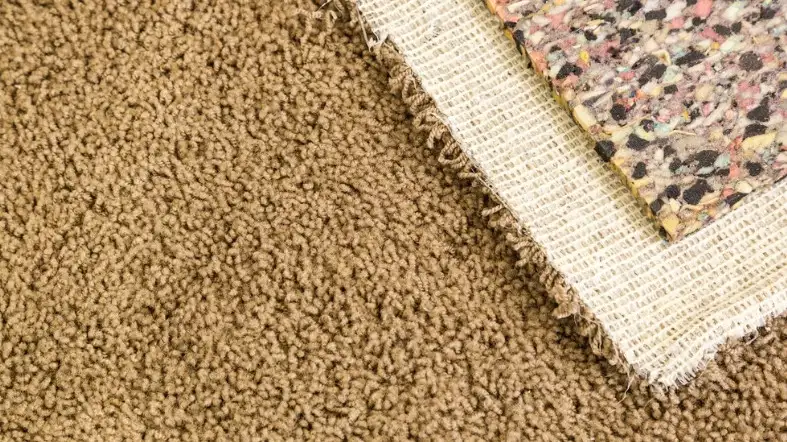
Weight
Before selecting padding for the base of your carpets, you must consider the product’s weight.
This is also known as the density of carpet padding. The density of the padding is expressed in pounds per cubic foot.
Floor padding typically weighs between three and ten pounds per cubic foot.
For the optimum cushioning for your floors, choose padding with a density between eight and nine pounds for your home.
These weights of padding are the most durable and provide the most comfort.
Thickness
You may believe that heavy padding is usually the best option, but this is not always the case in the carpeting market.
Several types of carpets perform better with smaller cushioning. Choose floor cushioning that is no more than half an inch thick.
This is due to the fact that larger padding might damage thin Berber carpets.
Thick floor pads have too much give for this type of carpeting, so in circumstances such as these, padding should be at least 3/8 inches thick.
Denser cushioning is not optimal for business locations or regions with heavy foot activity.
You will require thinner, heavier padding. Alternatively, denser padding is suitable for bedrooms and living rooms since it provides additional comfort, soundproofing, and insulation.
>> Is it safe to put a fire pit on an outdoor rug
Sustainability
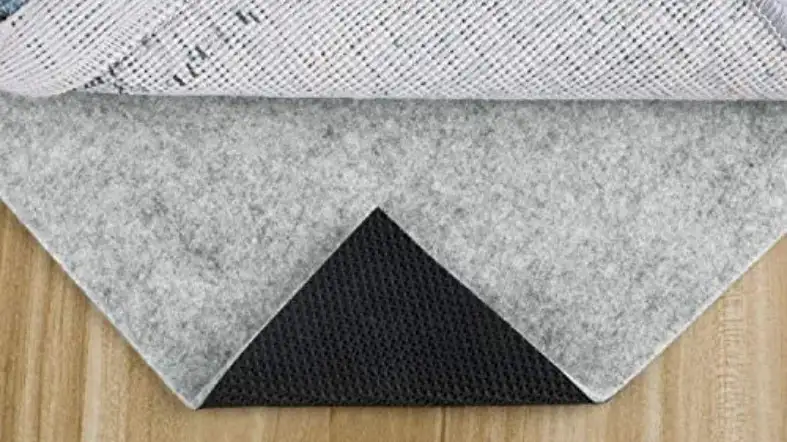
If you are environmentally conscious, you may want to select eco-friendly padding.
Recycled plastic bottles are one example of sustainable resources that can be used in some products.
Sustainable materials are advantageous since they reduce litter and allergy reactions.
A Guide To Installing Foam Carpet Pads
Take The Necessary Tools
- A domestic metal tape measure of high quality would suffice.
- For slicing the carpet and underlay, a durable utility knife and spare blades are required.
- Knee Kicker (Carpet Stretcher) to stretch the carpet over the gripper.
- Knee Pads are optional, depending on the strength of your knees!
- Carpet Tucker to crease and tuck the carpet beneath the gripper.
- Gripper Shears to cut the gripper to the appropriate length.
- Hammer for stapling the underlay to the wood floors.
Surface Preparation
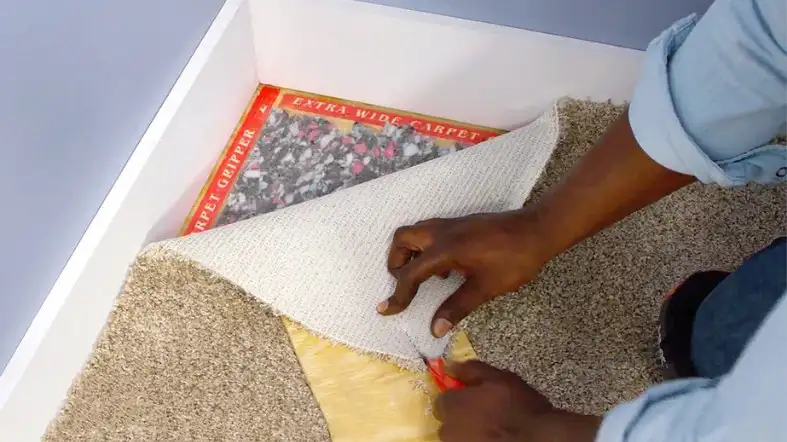
Before beginning, you must do a series of checks on the area where the carpet underlay will be installed.
Ensure the surface is clean. If there is too much dust, use a vacuum cleaner and remove any nails or small objects that are protruding from the surface.
If possible, temporarily remove the doors from their frames to expedite your job, but do not insist if the conditions do not permit it.
You must nail your carpet gripper to the room’s perimeter.
You must leave at least three-quarters of the carpet’s total thickness. To correctly install the underlay, it is essential to insert the carpet into this space.
Never position the grippers in front of a doorway; they are slanted and should face the wall.
To check that the gripper is facing the correct direction, you can read its printing.
The printed side should face the wall. Gluing your gripper may be required if your subfloor is difficult.
Place the gripper with precision to ensure that the underlay is level.
Once the subfloor is in place and ready to support carpeting, you can install carpet underlayment.
>> What size area rug for dining table?
Laying Carpet Underlay
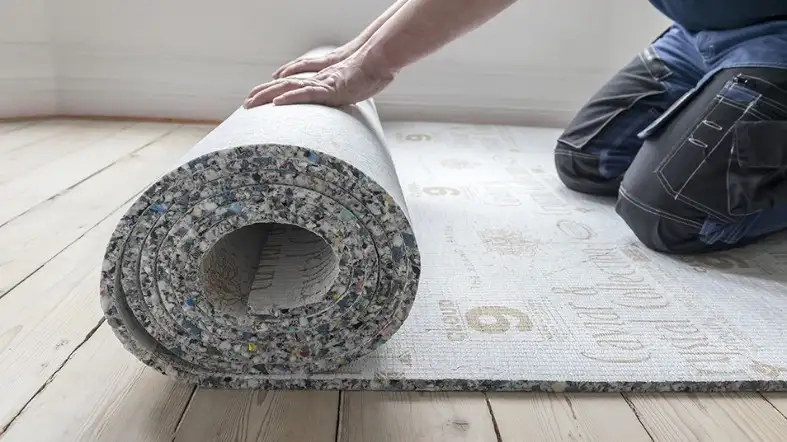
It may appear straightforward, but you should not act hastily. Incorrect placement of your carpet and underlay might result in a crooked-looking carpet.
First, align the angles of the underlay with the direction of the floorboards as you lay them.
The underlayment should be able to overlap the grippers that were previously attached.
When using a PU foam underlay, the colored film (PE Film) should face the subfloor.
For other underlays, such as waffle rubber or crumb rubber, the rubber side should face the subfloor, and the backing should face the carpet.
Remove any excess underlay protruding along the gripper’s interior.
Then, use underlay tape to seal the seam, keeping the underlay in place and concealing the lines while you install the carpet.
Putting Down The Carpet
Carpets are not inexpensive, therefore if you are unsure of how to install it correctly, you should call an expert.
Professional carpet installers are adept at installing carpets effectively. The first component required is the one that extends over the floor’s edge.
It should overlap by 10 centimeters.
Do not worry if it does not seem good, as you may trim it off once the carpet has been properly installed.
Before cutting the first portion, you must determine the room’s longest dimension.
After getting the measurement, add 10 centimeters. The carpet is then folded over itself.
You will then need to cut through the carpet’s reverse side.
You may use either the straight edge or the utility knife, whichever is more efficient. To avoid accidentally slicing the carpet beneath, you should use a scrap piece of wood.
Apply The Procedure To The Entire Room

From orienting them correctly to adding the 10cm measurements, you must adhere to the same procedure.
You might try to arrange the pieces such that they are concealed from plain view or high-traffic locations.
It may not be possible in all situations. To accomplish this, overlap the two carpet pieces.
Then, cut through the overlapped section and ensure that the ends of both pieces meet exactly. Place seaming tape where the carpets meet in the underlay.
Utilizing a carpet seaming iron on the tape will then activate and adhere the adhesive. Use a roller to complete your work after laying the edges.
Get a quotation – Durafort’s 6.5m rubber carpet underlay has been utilized effectively for premier carpet installations in five-star hotels across the globe.
FAQs
What’s the correct orientation for foam carpet padding?
The correct orientation is with the smoother side facing up, touching the carpet, and the rougher side against the subfloor.
Does it matter which side of the carpet pad goes up?
Yes, placing the pad correctly affects the feel underfoot and the longevity of both the carpet and pad.
Can incorrect placement of foam carpet padding cause issues?
Yes, incorrect placement can lead to faster wear and tear on your carpet, reducing its lifespan.
Is there a visual cue for placing foam carpet padding?
Often, one side is shinier or smoother; this side goes up, making contact with the carpet for a snug fit.
How does the right placement of carpet pad impact carpet maintenance?
Proper placement helps with shock absorption, protecting the carpet from excessive pressure and making cleaning more effective.
Final Thoughts
Now you know which side of the foam carpet pad goes up. Be sure to install it correctly so that your carpet will last longer and look better.
A properly installed carpet will also provide better insulation and soundproofing.
Now all you need to do is take a few easy measurements and select the proper material in order to display that beautiful new carpeting.
